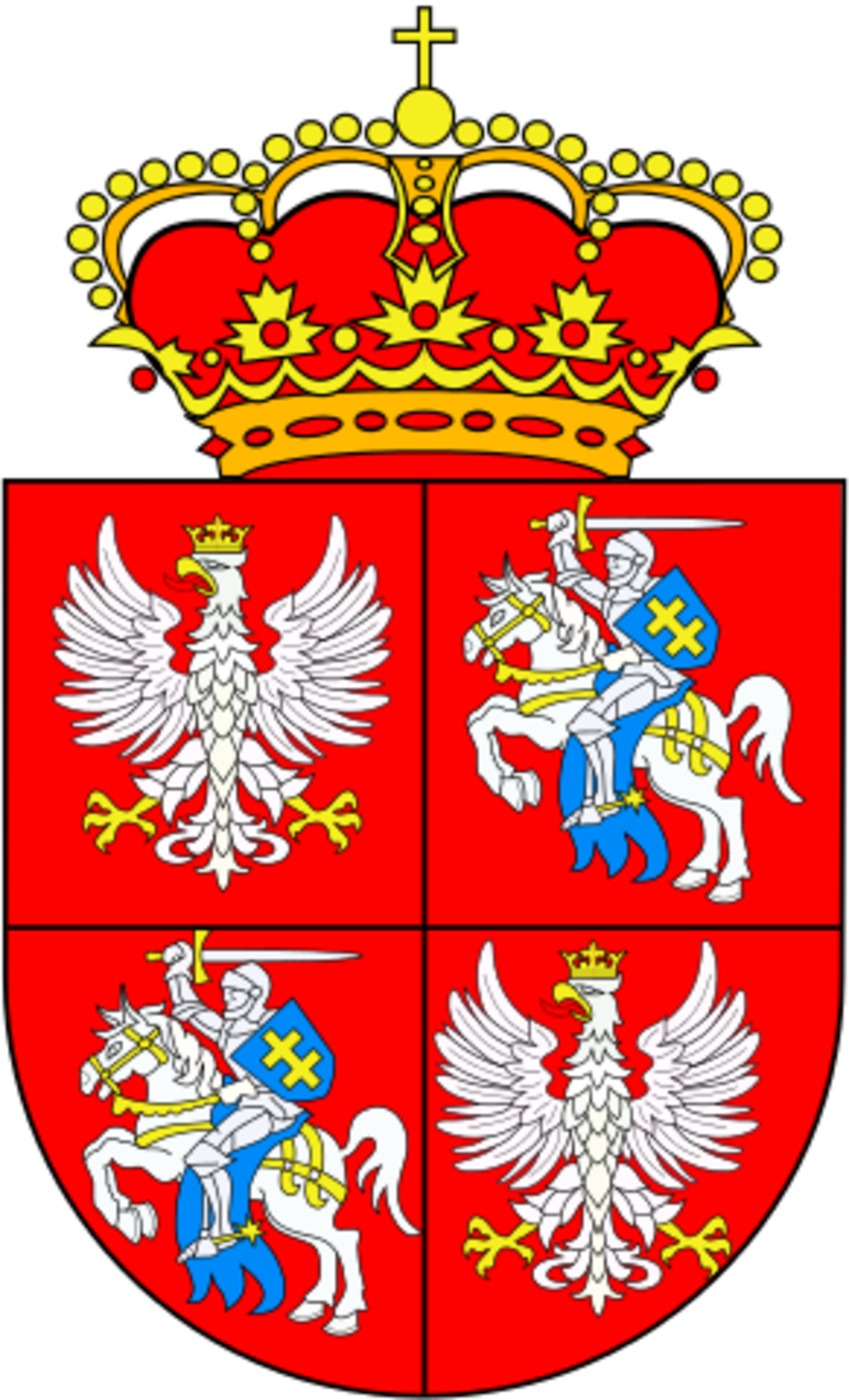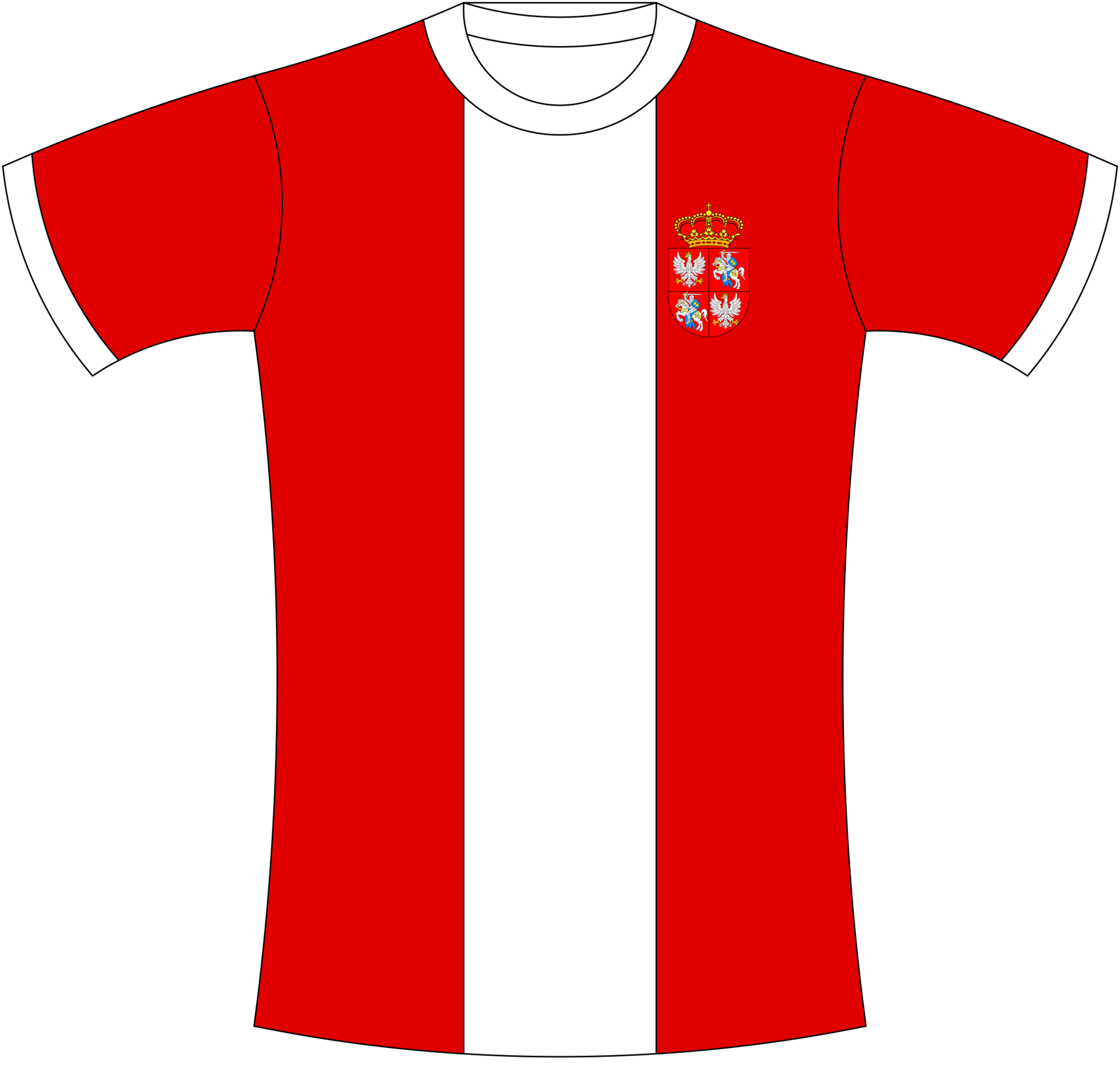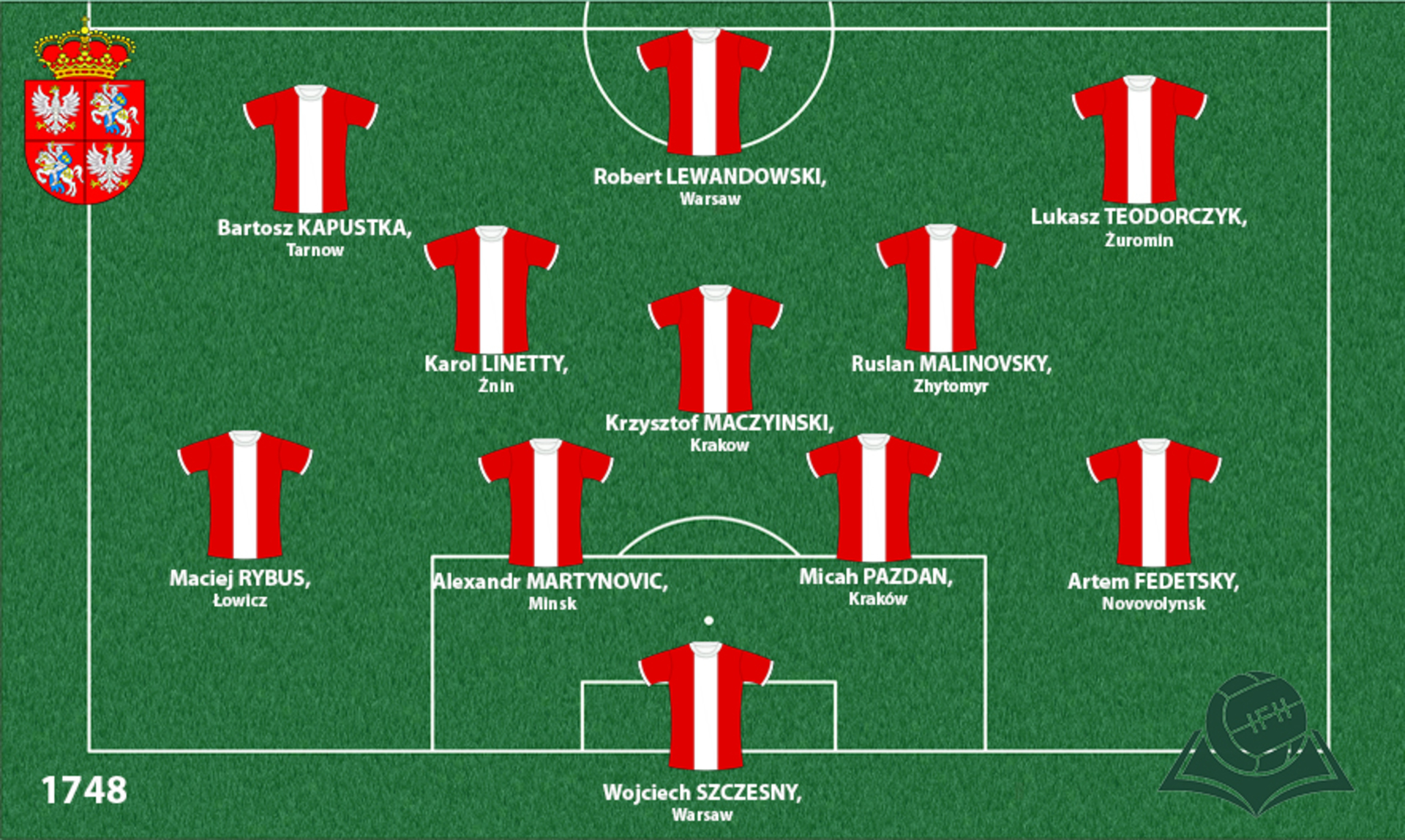The Polish–Lithuanian Commonwealth
The vast Polish-Lithuanian kingdom was in the mid-18th c. surrounded by three great powers: the Habsburg Monarchy, the Prussian and Russian Empires. Particularly the territorial expansion of the latter two would pose the greatest danger to the survival of the state itself.

Coat of arms

Shirt
| Position | First name | Last name | Mjesto rođenja | Like | Dislike | |
|---|---|---|---|---|---|---|
| GK | Przemyslaw | TYTON | Zamosc |
1 |
0 |
|
| GK | Wojciech | SZCZESNY | Warsaw |
19 |
1 |
|
| DC | Alexandr | MARTYNOVIC | Minsk |
6 |
2 |
|
| DC | Bartosz | SALAMON | Poznan |
0 |
2 |
|
| DC | Lukasz | SZUKALA | Gdańsk |
0 |
1 |
|
| DC | Michal | PAZDAN | Kraków |
3 |
0 |
|
| DRLC | Artur | JEDRZEJCZYK | Dębica |
0 |
1 |
|
| DRLC | Dennis | POLYAKOV | Minsk |
0 |
0 |
|
| DRL | Tomasz | KEDZIORA | Sulechów |
1 |
1 |
|
| DR | Artem | FEDETSKY | Novovolynsk |
3 |
2 |
|
| DR | Bartosz | BERESZYNSKI | Poznan |
2 |
1 |
|
| DC/DMC | Krystian | BIELIK | Konin |
3 |
1 |
|
| DMC | Ariel | BORYSIUK | Biała Podlaska |
1 |
2 |
|
| DMC | Nikita | KORZUN | Minsk |
0 |
0 |
|
| DMC | Syarhey | KISLYAK | Kamyanyets |
0 |
0 |
|
| MC | Karol | LINETTY | Żnin |
4 |
0 |
|
| MC | Krzysztof | MACZYNSKI | Kraków |
1 |
2 |
|
| MC | Ruslan | MALINOVSKY | Zhytomyr |
4 |
1 |
|
| MC | Stanislav | DRAGUN | Minsk |
1 |
0 |
|
| AMRLC | Bartosz | KAPUSTKA | Tarnów |
4 |
2 |
|
| AMRL | Pawel | WSZOLEK | Tczew |
0 |
0 |
|
| AML/DL | Maciej | RYBUS | Łowicz |
4 |
1 |
|
| AMRL/FC | Michal | ZYRO | Warsaw |
0 |
2 |
|
| FRLC | Mikhail | GORDEJCHUK | Saran |
0 |
0 |
|
| FC | Artjoms | RUDNEVS | Daugavpils |
2 |
0 |
|
| FC | Lukas | SPALVIS | Vilnius |
4 |
1 |
|
| FC | Lukasz | TEODORCZYK | Żuromin |
3 |
2 |
|
| FC | Mariusz | STEPINSKI | Sieradz |
1 |
0 |
|
| FC | Robert | LEWANDOWSKI | Warsaw |
21 |
1 |
(Today part: central and eastern Poland, Belarus, western Ukraine, Lithuania, parts of Latvia)
As early as the mid-17th century. the weaknesses of the Polish-Lithuanian state are brought to light. The cities were decaying, and the disobedient aristocracy brought the peasants almost to the status of slaves, disabling both the rule and the defense of the kingdom. The Cossacks on the Dnieper, in turn, rebelled against the nobility and accepted the supreme authority of Moscow. The principle of electoral monarchy arose under international conditions that were extremely favorable to Poland. Relations with the powerful neighbors were peaceful (with the Ottomans) and even friendly (the Habsburgs), and conflicts with Russia took place on the state periphery
However, especially in the 18th century. the balance of political forces in this part of Europe began to gradually change to the detriment of Poland. The division of power, emphasized by the electoral monarchy that put the Crown under the control of the nobility, and a geographical position that did not provide natural protection to the kingdom, quickly led the country into the path of collapse before the advance of Sweden, Prussia and Russia. It is also important to emphasize that there was always a representative of dynasties such as Habsburg, Valios, Vas, the Transylvanian prince or the emperors of Moscow, who ruled in their countries in an almost absolutist manner. It should therefore come as no surprise that it sought to establish guarantees that would prevent the introduction of such hated institutional forms. All kings put the interests of their own dynasty or country of origin first. Whether the key cause of the fall was the strength of its neighbors or a state political institution, the Polish-Lithuanian state will, in the second half of the 18th century. with several divisions of its territory between the Prussian, Habsburg monarchy and Russia disappear from the map of Europe.
Sources
- Grupa autora, Povijest: Počeci novog doba (16. stoljeće), knjiga IX., Zagreb 2008. ,645
- Grupa autora, Povijest: Doba apsolutizma (17. stoljeće), knjiga X., Zagreb 2008.,634
- Grupa autora, Povijest: Doba prosvjetiteljstva (18. stoljeće), knjiga XI., Zagreb 2008.,61
- Coa of Arms: http://althistory.wikia.com/wiki/File:Polish-lithuanian-commonwealth-coat-of-arms.png
